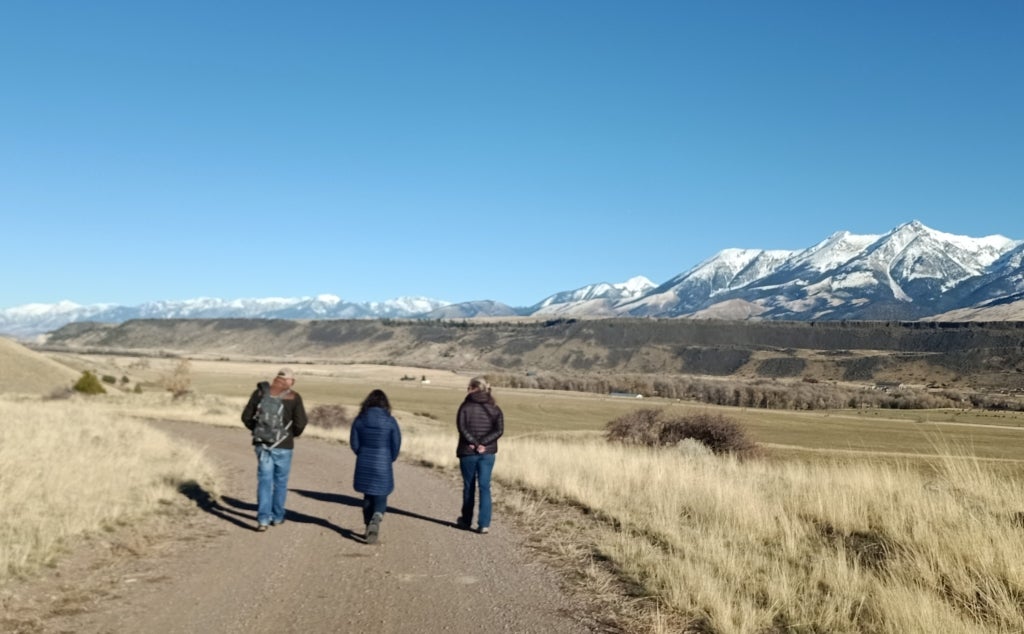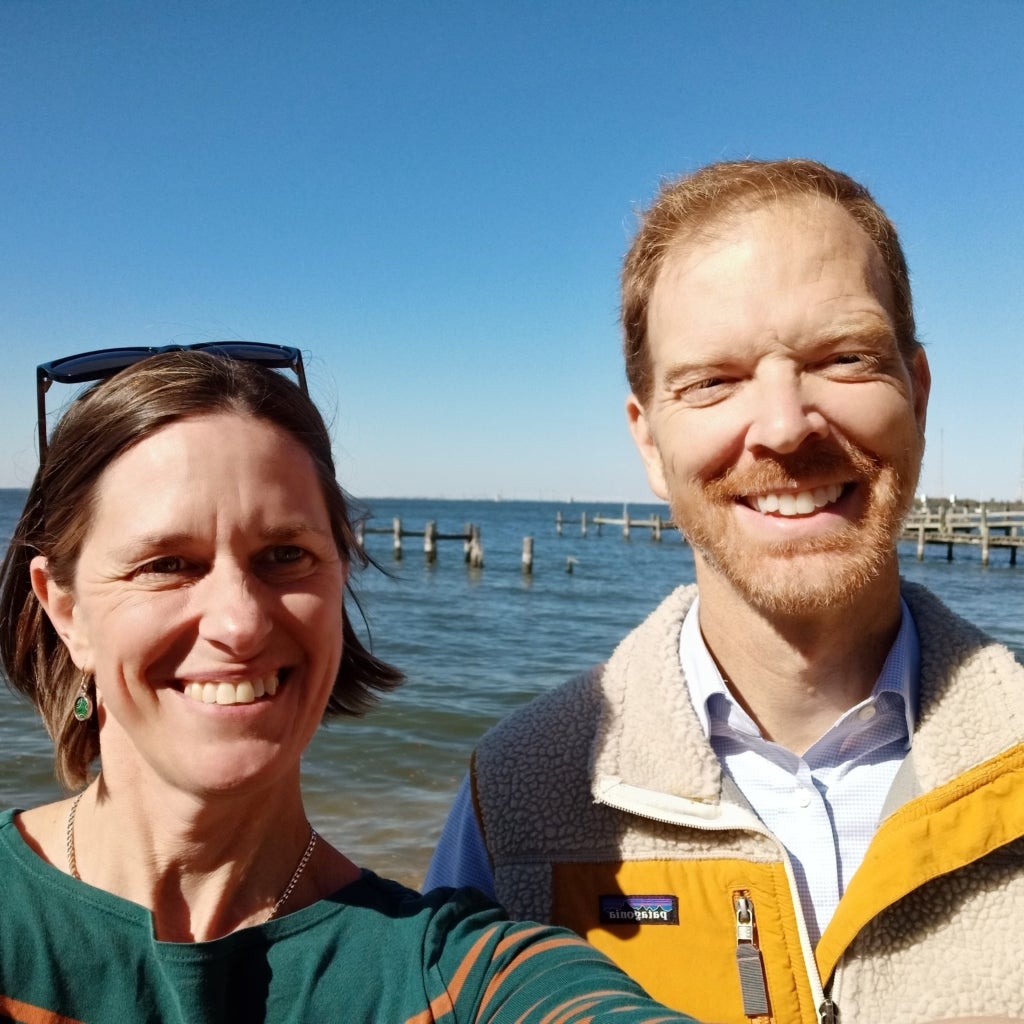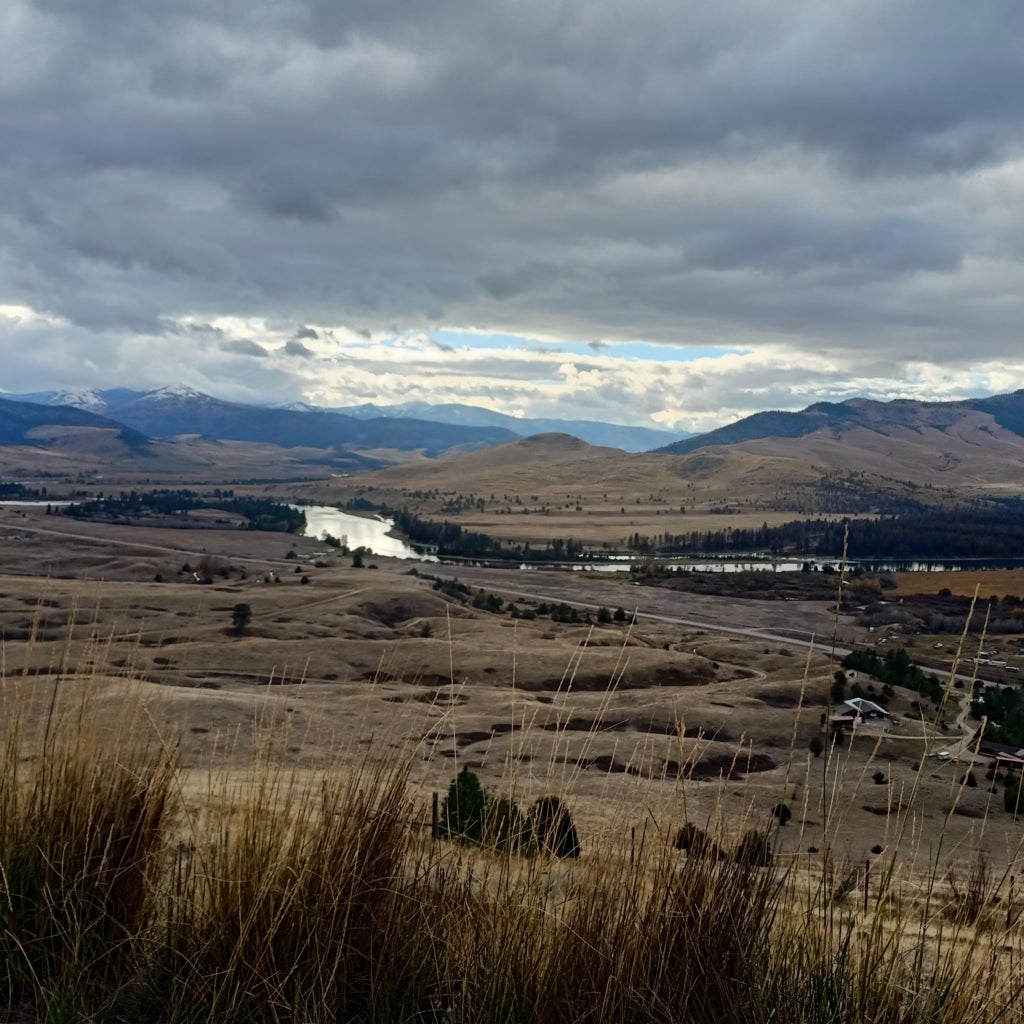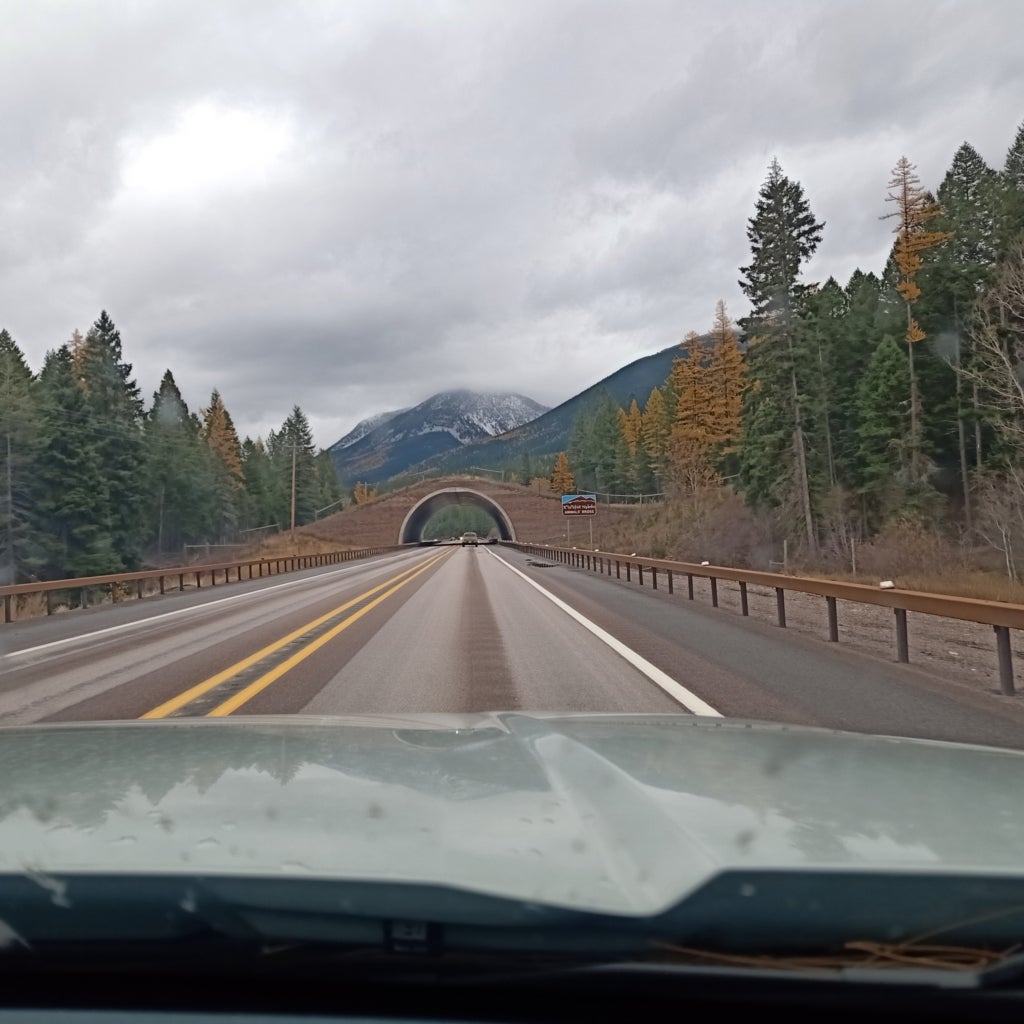Gunn’s Churchill Fellow Report on US Conservation Captures the Realities of Working in an Ever-Changing Field – and Finds Hope Along the Way
I hope that through this report, we can shine a light on the incredible impact that land trusts, networks, alliances, conservancies, and local communities, First Nations people, are having in the American context. I know that will continue.
– Jody Gunn, 2022 Churchill Fellow & CEO of the Australian Land Conservation Alliance
For over a century, the United States has been a hub for conservation innovation. It is where the first conservation land trust, the Trustees of Reservations, was founded in 1891; where the modern conservation easement was developed and implemented in the mid-1900s; and where the first land trust accreditation program took shape in the early 21st century. In 2024, Jody Gunn, CEO of the Australian Land Conservation Alliance (ALCA), traveled to the United States as part of her Caroline Welsh Churchill Fellowship to explore the context for this progress.

Gunn’s March 2025 report “Enabling conservation in a rapidly changing world” and her reflections in a recent interview with the ILCN provide insight into the elements of US conservation that may strengthen Australia’s private land conservation sector and the global community of practice.
Much of what Gunn found relates to community, collaboration, and inclusivity. Conservation in the United States is rooted in cross-boundary and cross-sector partnerships, underpinned by a foundation built on a whole-of-society approach, and, in more recent years, increasingly focused on its relevance and role in supporting different perspectives and knowledge systems.
Land trusts are community support organizations
Private land conservation in the U.S. plays a crucial role in protecting biodiversity, mitigating climate change, building resilience in food systems, and preserving cultural landscapes.
– Gunn, “Enabling Conservation in a Rapidly Changing World” (P. 14 Protecting and stewarding lands and watersheds)
There are over 1,200 active land trusts in the United States, which together protect more than 61 million acres (over 24 million hectares) of land. These often small, community-based organizations play a central role in land conservation across the country. They support landowners; local, state, and federal government agencies; Indigenous groups; and other stakeholders that enable critical landscape scale conservation outcomes by building trust-based relationships.
While in the United States, Gunn visited several such land trusts. All worked in different geographic and social contexts but shared a common goal: they are conserving land for the benefit of present and future generations of people in their communities and beyond.
“Across all of the different [land trusts] that I visited, it was really inherent how tailored [their approach] was to the needs of their particular community and how that drove the design of the work that they were delivering,” said Gunn.
Chesapeake Conservancy takes a holistic approach to conserving land

Gunn highlighted the Chesapeake Conservancy (Chesapeake) for its approach to forging meaningful connections with both Indigenous and non-Indigenous communities in the region. Chesapeake focuses on conserving land and water in the Chesapeake Bay Watershed and, among other examples that Gunn notes in her report, is a long-time partner of the Rappahannock Tribe, which was among the first federally recognized Virginia tribes. Through that partnership, the Tribe has reclaimed significant portions of its traditional territory and protects critical habitats, including bald eagle nesting sites.
Gunn noted that Chesapeake made a sustained effort to understand the historical context and current needs of its communities and to design solutions that work for both. That meant taking the time to understand the historical significance of an area and working closely with the community to determine how it wants to use the land in alignment with conservation outcomes.
Gallatin Valley Land Trust connects people to nature and recreation
Over 2,000 miles away in Bozeman, Montana, the Gallatin Valley Land Trust (GVLT) operates in a very different context but is similarly working to support its community. GVLT got its start conserving, expanding, and improving access to trail systems. “People that live there are really connected to outdoor activities, and they [GVLT] appear to really lean into that,” said Gunn.
While GVLT’s work is critical to preserving habitat and supporting working lands, the trust builds its credibility by ensuring its local community remains connected to the habitats it protects and the values of the community at large. One early project saved a popular sledding and walking area from real estate development. Projects like this were critical to GVLT being seen as an ally.
“The team attests that being highly visible and delivering outcomes that are close to the everyday lives of their community has supported their organizational credibility and thus their ability to engage the community and solicit funds,” Gunn wrote in the report.
Indigenous-led conservation is enabling more and better land protection
Across most organisations I met with, there was acknowledgement that Indigenous communities are primary stewards of biodiversity and there was evidence that the sector was moving to actively address systemic land access inequities. Further for some organisations, there was a demonstrable shift from protecting land solely for nature to ensuring that land benefits communities, reflecting a more holistic understanding of conservation.
– Gunn, “Enabling Conservation in a Rapidly Changing World” (P.20 Insights on Indigenous-led conservation)
While Gunn’s paper highlights the important role all types of partnerships play in conservation success, those between Indigenous and non-Indigenous groups are particularly effective.
She saw this both in the United States and back home in Australia. “It was demonstrated, that with all relationship building, but especially those with First Nations-led organizations, trust and relationship building is absolutely a fundamental part of that conversation,” she said. The outcomes partnerships can achieve together grow from an early and committed investment. “It all points back to that early building of relationships. Long-term intent and building trust and recognition—that takes time.”
The value of the partnership that returned Split Rock Mountain to the Ramapo People

In New Jersey, Gunn met separately with The Land Conservancy of New Jersey (The Land Conservancy) and the Ramapo Munsee Land Alliance (RMLA). The two organizations are based out of Boonton, New Jersey, and work closely with each other. “Both of them reflected on the importance of their relationship with each other,” said Gunn.
In the past decade, The Land Conservancy and Ramapo Munsee Lunaape Nation partnered to conserve an area known as Tahetaweew—or, commonly, Split Rock Mountain—and to return it to the Ramapo People. To do so, The Conservancy helped the Nation establish the RMLA, raised $360,000 (USD) to purchase the site, and then donated it to the RMLA.
Throughout this process, the partnership supported the RMLA in strengthening capacity and accessing financial resources. Now, this capacity will support conservation in the region, benefiting both organizations.
Partnerships with land trusts have been an entry point to conservation funding for Indigenous groups
Across the country land trusts have been slowly helping to turn the tide on funding accessibility for Indigenous groups seeking to conserve their lands and territories. It was not until 2023 that the US federal government began designing meaningful policies to include Tribes in conservation funding. A report from that year showed that, in 50 years, only 0.2 percent of Land and Water Conservation Fund (LWCF) State and Local Assistance Program grants went to Tribal Nations (see Box 1 on LCWF). The Biden Administration aimed to reverse that pattern with its America the Beautiful program, but decades of underfunding significantly disadvantaged both Indigenous People and the conservation movement as a whole.
Land trusts, such as Chesapeake, have created strong grant applications in partnership with Indigenous groups, opening the door to funding that was inaccessible to Tribes for decades. This is a significant step, in a historic context, but Indigenous people and their allies are pushing for better.
“Across my conversations in the US, Canada, and Australia, I heard Indigenous communities really asking for funders to give trust, to build those relationships, recognize their strengths, recognize their leadership, indeed support capacity and capability building where that’s been identified,” said Gunn.
Indigenous communities need to be afforded opportunities to lead in conservation to build this rapport with funders. “It might look differently to what they [funders] might be used to. And, again, that goes back to the idea of trusting them to lead and trusting them to do so in a way that’s culturally appropriate for their community,” said Gunn.
Uplifting Indigenous-led conservation is a shared priority for the United States and Australia, though Gunn noted some structural differences. Foremost, the United States recognizes tribal sovereignty through treaties. These treaties sometimes help enable Tribal ownership of and autonomy over land and land management. However, both countries are discussing how they can improve Indigenous access to land and its equitable management and benefit sharing.
Cross-sector collaboration and bipartisanship create a tight weave to support conservation
Collaborative networks – comprising land trusts, Indigenous nations, private landowners, government agencies, non-government and conservation finance organisations – help align and leverage resources, share knowledge, and implement region-wide projects and strategies … Such interconnected efforts can ensure that conservation action is durable, adaptive and responsive to the increasing pressures facing our environment today.
– Gunn, “Enabling Conservation in a Rapidly Changing World” (P. 23 Landscape scale initiatives and conservation networks)
The success of Indigenous partnerships reflects a broader trend across the conservation sector, which has been built on and through collaboration. In the United States, this stands out in examples of landscape-scale conservation initiatives and in innovative conservation finance. Gunn writes that these approaches recognize the blurred boundaries of nature, where ecosystems and the wildlife within them are oblivious to the many lines people map across land.
Organizations like the Greater Yellowstone Coalition (GYC) and the California Landscape Stewardship Network bring together a web of landholders, conservationists, local, regional, and state governments, and Indigenous groups to protect vast landscapes that rely on connectivity to thrive.
Green infrastructure and wildlife crossings require nuanced planning and cooperation

In addition to building a strong local presence and reputation for on-the-ground work, these organizations leverage policy tools like conservation easements and elk occupancy agreements to secure land and collaborate with land users to enable human-wildlife coexistence, including on working lands. Their diversity and wide-ranging connections also help them secure funding for partner organizations and to craft more equitable and effective policies based on myriad interests.
“I observed some really significant work being undertaken across the US with regards to connectivity, and particularly in relation to infrastructure,” said Gunn.
The GYC’s wide lens and many partnerships, including with the leadership of the Centre for Large Landscape Connectivity, have helped it raise funds and facilitate building wildlife crossings. These are green infrastructure strategies that help people and wildlife share land safely. Wyoming is known for its herds of large, roaming animals such as elk, big horn sheep, and moose, that need wide-open space to thrive. The GYC has helped facilitate wildlife crossings across Wyoming and in neighboring states and it is not alone in this innovation.
Similar work is taking root across the United States. If successful, a project now underway in California will raise the world’s largest wildlife crossing—a 210-foot bridge across a Los Angeles County freeway. It is funded and facilitated through a public-private partnership that includes the Santa Monica Mountains Conservancy, which works across Southern California by leveraging partnerships and alliances.
Diversity in funding and policy support create resilience in US conservation
In her report, Gunn identifies funding and policy as two pillars enabling conservation action. In the United States these topics are intertwined and support for both flows from multiple sources. Diversity in funding methods, in particular, has afforded the sector an important level of resilience and flexibility. She pointed to blended finance, public-private partnerships and philanthropy as particularly effective in supporting conservation in the United States.
Similarly, public sector conservation support and funding come from many sources. The United States’ policy framework “Conserving and Restoring America the Beautiful” oiled the tracks for this in recent years. It brought together three US departments and the Council on Environmental Quality; added new funding for conservation; and empowered state, local and Tribal conservation initiatives. Other important tools Gunn noted include the Land and Water Conservation Fund (LWCF), conservation easements and tax incentives, the Farm Bill, the Inflation Reduction Act, ballot initiatives, carbon markets and climate solutions, and more.
Withstanding the winds of change
Organisations experienced in navigating political changes were relatively prepared to adjust their narratives, tones and activities. However, there was an acknowledgement that the forthcoming changes could have both dire and unpredictable impacts. They stood ready and determined to anticipate and mitigate.
– Gunn, “Enabling Conservation in a Rapidly Changing World” (P. 45 Winds of change)
In 2025, several of the policy instruments Gunn noted during her time in the United States have been dismantled or significantly disadvantaged. Gunn said their roots in bipartisanship are what keep enabling conditions for conservation standing amidst changing policy priorities. This longstanding and ongoing bipartisan support for conservation is a key feature that enables conservation work in the United States to continue to respond to communities’ needs and interests.
The Land and Water Conservation Fund is an example of a policy built on a bipartisan foundation
Gunn finished her report just as the second Trump administration got underway. Watching US policy evolve in the months since has been eye opening. For example, the administration recently proposed dramatic reforms on the LWCF, but Gunn holds out hope for the fund’s future. “Policies like the Land and Water Conservation Fund that are really clear on their purpose—and, in particular where they have bipartisan support—are really important in building, in enabling, that resilience across time,” she said.
The LWCF has received support from both major parties and from various areas of the federal government over six decades. Thus, when it came under fire, a diverse group of stakeholders felt the pressure and may be motivated to protect it.
Box 1. Land and Water Conservation Fund
Congress established the Land and Water Conservation Fund in 1964 to safeguard natural areas, water resources, cultural heritage, and Americans’ access to outdoor recreation. Part of the fund’s appeal is that it does not rely on taxpayer dollars. Rather, it draws on earnings from offshore oil and gas leasing. In 2020, the United States passed the Great American Outdoors Act, which permanently allocates $900 million (USD) to the LWCF.
An array of government agencies has historically supported conservation in the United States
Gunn said she was impressed by how many different US government agencies were directly engaged in policy and funding for environmental improvements. In particular, she noted the involvement of the Department of Defense and the agricultural sector, two stakeholder groups who rely on land, in finding shared interests with land conservation. “I think that’s really important in building that resilience across [sectors]. It’s not just the environment area, or portfolio, of a government that is focused on this, but it is a whole-of-government responsibility.”
National and regional networks play a major role in supporting collaborative conservation and promoting resilience
She also pointed to the complementary elements of state-based policies and funding, as well as private organizations such as the Land Trust Alliance. The Alliance has been critical in connecting conservation interests with the agendas of every sector from NGOs to governments, the private sector, and philanthropic organizations. “We know that alliances are really vital to supporting those communities and I saw that writ large in my visits across the US.”
Transparency, accountability, and well-designed communication are critical to policy staying power
Gunn said that releasing her report now presents an opportunity to reflect on an important question: “What does it take to ensure that these [policies] can withhold the stand of time?” In addition to bipartisanship, she noted several elements for doing so.
First, she said that strong and transparent governance of policies can help avoid too much political influence. This means ensuring that committees and other internal elements do not have strong political bias. Accountability goes hand-in-hand with this, ensuring that the parties responsible for managing the policy are clearly defined.
Finally, she emphasized the importance of communicating a policy’s impact, both in terms of its benefits and drawbacks. This goes beyond noting its climate and biodiversity benefits to demonstrating economic, health, recreation and other outcomes. Focusing on impacts that are timely and relevant to communities and that show the nuanced ways the policy will affect people and municipalities attracts wider support from the public and from government decision-makers.
Better communication is critical to engaging voter support and a whole-of-society movement
“There are some really common themes across how our sectors communicate and our ability to create the links of the work that we do for nature and how critical that is for our human wellbeing, our livelihoods, and our economies, ultimately.”
Gunn said more effective communication is emerging. She noted the “The Economics of Biodiversity: The Dasgupta Review,” an independent report published by the UK Treasury. The review frames ecosystem health as an integral element for economic prosperity worldwide. It was supported by a cross-sector advisory panel of experts in public policy, science, economics, finance, and business.
“That was a groundbreaking piece of work,” said Gunn. “[The Dasgupta Review] has influenced the way people are thinking about and understanding the role of nature and underpinning, ultimately, our economy.”
Australia recently underwent its own election. In the leadup, Gunn said, the cost of living was top of mind for many voters. “We know that the cost of living is going to increase as the state of our environment continues to decline. Our insurance premiums are going up, food security is becoming more challenged, so things are costing people more.” But she did not see that connection reflected in campaign communications. “We haven’t painted that relationship in a way that influences policy and investment,” she said. “We have to, as a sector, really think about how we’re communicating and to who.”
A hopeful future lies in an interconnected mission
In an era of escalating environmental crises, the role of land conservation alliances in preserving biodiversity, mitigating climate change, and fostering sustainable land use has never been more critical.
– Gunn, “Enabling Conservation in a Rapidly Changing World” (P. 47 Delivering impact through alliances)
Gunn grounded her Churchill fellowship work in a peer-learning philosophy. As the leader of a regional alliance, which also works closely with the International Land Conservation Network, she recognized the depth of learning that comes from watching your neighbors succeed, overcome challenges, and play with innovation. “There are things that we’re advancing in Australia, there are things that you’re advancing over there in the US, and [it helped reinforce for me] just how important these opportunities are for learning from each other.”
In the United States, Gunn found conservation at a key moment. As it faces shifting challenges as well as new opportunities, its stability comes from linking arms with as many others as possible. “I appreciate that it’s a challenging time to be reflecting on all of this work when, at the moment, the environmental movement is under quite significant strain. One of the pretty cool and very necessary things about building resilience is staying connected and supporting each other through our work,” she said.
